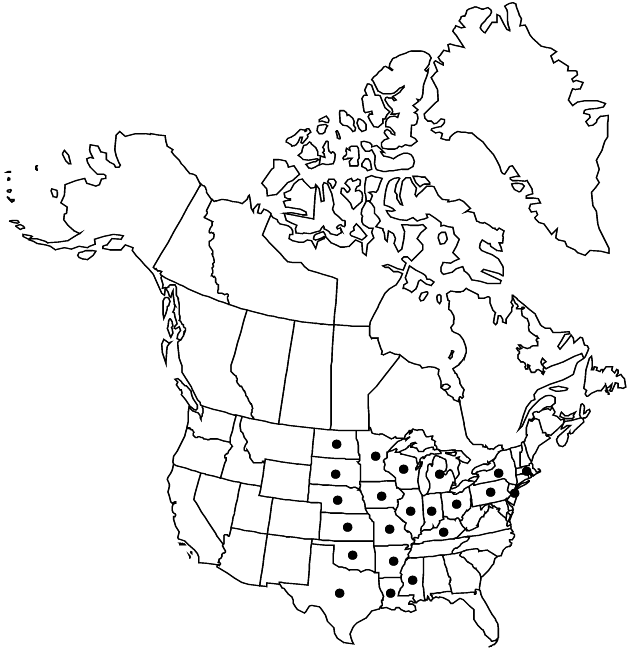Liatris pycnostachya var. pycnostachya
Endemic
Synonyms: Liatris bebbiana Rydberg Liatris langloisii (Greene) Cory
Treatment appears in FNA Volume 21. Treatment on page 525.
Revision as of 21:54, 29 July 2020 by imported>Volume Importer
Corms globose. Stems usually glabrous or sparsely pilose except near heads (where sparsely piloso-puberulent). Leaves glabrous. 2n = 20, 40.
Phenology: Flowering mid Jun–Aug.
Habitat: Moist prairies, wooded and rocky ridges, sandy woods, creek bottoms, dunes
Elevation: 30–300(–900) m
Distribution

Ark., Ill., Ind., Iowa, Kans., Ky., La., Mass., Mich., Minn., Miss., Mo., Nebr., N.J., N.Y., N.Dak., Ohio, Okla., Pa., S.Dak., Tex., Wis.
Discussion
Liatris pycnostachya is commonly cultivated. Collections from Michigan “doubtless represent escapes” (E. G. Voss, pers. comm.), as also do those from Massachusetts, New Jersey, and New York.
Selected References
None.
Lower Taxa
None.
"barbellate" is not a number."fine" is not a number.
... more about "Liatris pycnostachya var. pycnostachya"
introrse +
connate +
usually acute;acute-acuminate +
scarious +
absent +
hirsute +
papillate +
spiciform +
dense +
continuous +
glabrous +
decurrent +
mostly linear;ovatelanceolate +
(4-)5-angled;10-ribbed +
hyaline +
linear-clavate +
stigmatic +
barbellate +
12;40 +
coarse +
absent +
glabrous +
not 2-lipped +
equaling +
monomorphic +
8-11-ribbed +
prismatic +
3.8mm;4.5mm +
straight +
distinct +
proximal +
5;8 +
bisexual +
dispersed +
singly +
discoid +
indeterminate +
homogamous +
surrounding +
campanulate-cylindric +
3-5-nerved +
alternate +
glabrous +
linear;narrowly oblanceolate or oblanceolate +
2-carpellate +
inferior +
attached +
anatropous +
persistent +
absent +
tough +
thick +
connate +
nerved +
persistent +
distinct +
falling +
unequal +
equal +
Fl. Bor.-Amer. +
1803 +
absent +
epaleate +
conic;spheric;usually flat;convex +
elongate +
fibrous +
exalbuminous +
modifed +
4;5 +
Endemic +
alternate +
erect +
2-branched +
hirsutulous +
papillate +
Liatris pycnostachya var. pycnostachya +
Liatris pycnostachya +
variety +
perennial +